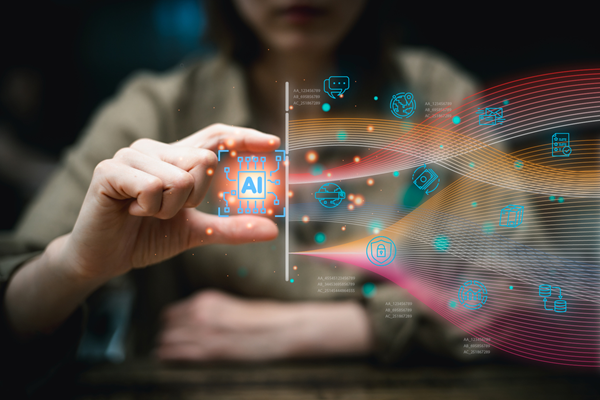Are human-made meeting notes becoming a thing of the past?
How new generative AI-enabled tools are addressing the pain points of inaccuracy, data risk and vulnerabilities

In a TV ad, a man sitting at an office desk stretches after accomplishing a task, then he looks at his watch and his jaw drops at how quickly he has finished it. It’s a relatively underwhelming creative idea for an advert, but it stands out, nevertheless, on the merit of the relatable human experience it depicts.
A more universal feeling that knowledge workers share across the globe has been how much more time a task takes than previously expected. This is often the result of simple, repetitive tasks involved in the workflow that “will just take a few minutes” and have the tendency to multiply and ruin schedules.
But today, more and more employees in all sorts of roles can pat themselves on the back just like the man in the advert for having got much more done thanks to generative AI. Teachers can write school reports, human rights lawyers are able to draft speeches and material scientists improve existing compounds in a fraction of the time they took previously – albeit with the crucial caveat that the work is checked and overseen by a human. Generative AI isn’t quite infallible just yet, after all.
How GenAI saves time when integrated into communication and collaboration (C&C) tools
Several major C&C tools have already integrated generative AI capabilities. The most obvious is Salesforce’s Slack, the productivity platform used by Open AI, which now has a ChatGPT app built into it.
This means that each colleague on Slack has access to a capable assistant of their own who can, for example, take on the rather unpopular task of writing the minutes for a meeting, leveraging ChatGPT’s natural language processing and summarising capabilities.
The premium version of Microsoft Teams also offers an automated note-taking functionality enabled by its intelligent recap capability, as well as the ability to generate suggestions for tasks and actions that need to get done as the outcomes of the meeting.
What makes these solutions smart is that they can also generate first drafts of presentations, intranet communications and blogposts in response to prompts, thus reducing the time required for content creation.
The other forte of generative AI that C&C tools leverage is its information retrieval capability, which empowers search engines to find relevant information both on the internet and internal corporate systems in real time. One of the pitches compares this to the user having a second brain.
One way of measuring the effectiveness of these tools is documenting how much time they can save. Microsoft’s survey on the productivity gains of Copilot users has found that, on average, they save fourteen minutes per day – 1.2 hours per week – with 22 per cent of users saving 30 minutes daily.
GPT-4 for enterprises and domain-specific large language models
August 2023 was another milestone in Chat GPT’s triumphant march. The enterprise version of ChatGPT has been developed to remove a major roadblock: its shortcomings in data protection and cyber-security.
Although the efficiencies touted by developers are hard to resist, businesses are wary of generative AI leaking their proprietary data into the public realm.
To dampen these fears, Open AI reassures corporate users that its clients will “own and control their business data in ChatGPT Enterprise”, and that the model will neither be trained on their business data and conversations, nor learn from its usage by the company.
Alongside the GenAI-powered offerings of big tech platforms, there is also an emerging trend of task-specific solutions that improve the suitability and relevance of the data fed into the model rather than the model itself.
Although in these domain-specific models the number of parameters, which defines a model’s predictive capacity, is lower by orders of magnitude (a few billion as opposed to ChatGPT4’s 1.76 trillion), the fact that they are trained on appropriate data boosts their efficiency and reliability.
Raghu Ravinutala, of Yellow AI, explains the difference between generalised and domain-specific data by how a model trained on the former would have difficulties understanding “policy endorsement”, a technical term in insurance, while the latter, being trained on insurance terminology, will interpret it in the right context.
This is exactly how Genie AI, the first multi-modal AI legal assistant, and BloombergGPT, designed to support the financial industry, have been developed from large language models. But there are plenty of examples from other sectors too.
Naturally, when businesses make their choices about which GenAI tools they should deploy, metrics are of little help. They’re more likely to look for performance indicators, such as the consistency of generated answers, the acceptance rate of the output by humans, or the diversity of results for assessing paraphrasing capacity.
Meanwhile, for getting some reassurances as to the security and safety of corporate data, certified SOC2 compliance is a filter that can help shortlist available GenAI solutions.
As GenAI-enabled products start to proliferate, further guarantees of their reliability and safety will be in high demand among corporate clients, who can’t wait to jump on the GenAI bandwagon responsibly. After all, an employee finishing tasks well ahead of schedule and eager to take on new, high-value jobs is what they’ve always been after.

Zita Goldman
Most Viewed
Winston House, 3rd Floor, Units 306-309, 2-4 Dollis Park, London, N3 1HF
23-29 Hendon Lane, London, N3 1RT
020 8349 4363
© 2024, Lyonsdown Limited. Business Reporter® is a registered trademark of Lyonsdown Ltd. VAT registration number: 830519543





